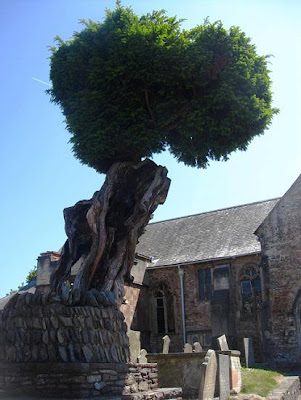 At Sea Walls we scrambled down the very steep sides of the gorge to a rocky outcrop high above the muddy River Avon. Luckily, a fence has been installed to pen the goats in the gully, presumably until they become hefted, and this eased our precipitous slither.
At Sea Walls we scrambled down the very steep sides of the gorge to a rocky outcrop high above the muddy River Avon. Luckily, a fence has been installed to pen the goats in the gully, presumably until they become hefted, and this eased our precipitous slither.
It was low tide, and we could see the sun glancing off the mud banks that lurked a couple of hundred feet below us.
Dru had already visited the goats every day since their arrival earlier in the week, but this was my first glimpse. We saw two, then three, and finally all six sunbathing, eating and generally lazing about in the sun.
I was moderately pleased with my photos until I saw Dru's. I'm going to claim she achieves this because her camera is the dog's bollocks, but actually it's because she is knowledgeable, has a good, quick eye and doesn't walk around with her mind in China.
Eventually we scrabbled all the way down to the Portway, and without falling to our deaths.
And there were still more glories to behold, like a pair of buzzards and a peregrine (so Dru tells me). And these fugitive red hot pokers, looking better au naturel than ever they do in suburban gardens.
And back up top, another dead tree, this one with a chiff-chaff at the top, chiff-chaffing the remains of the afternoon away. Lovely.








































